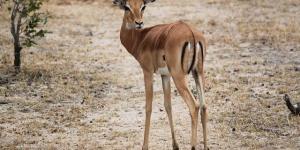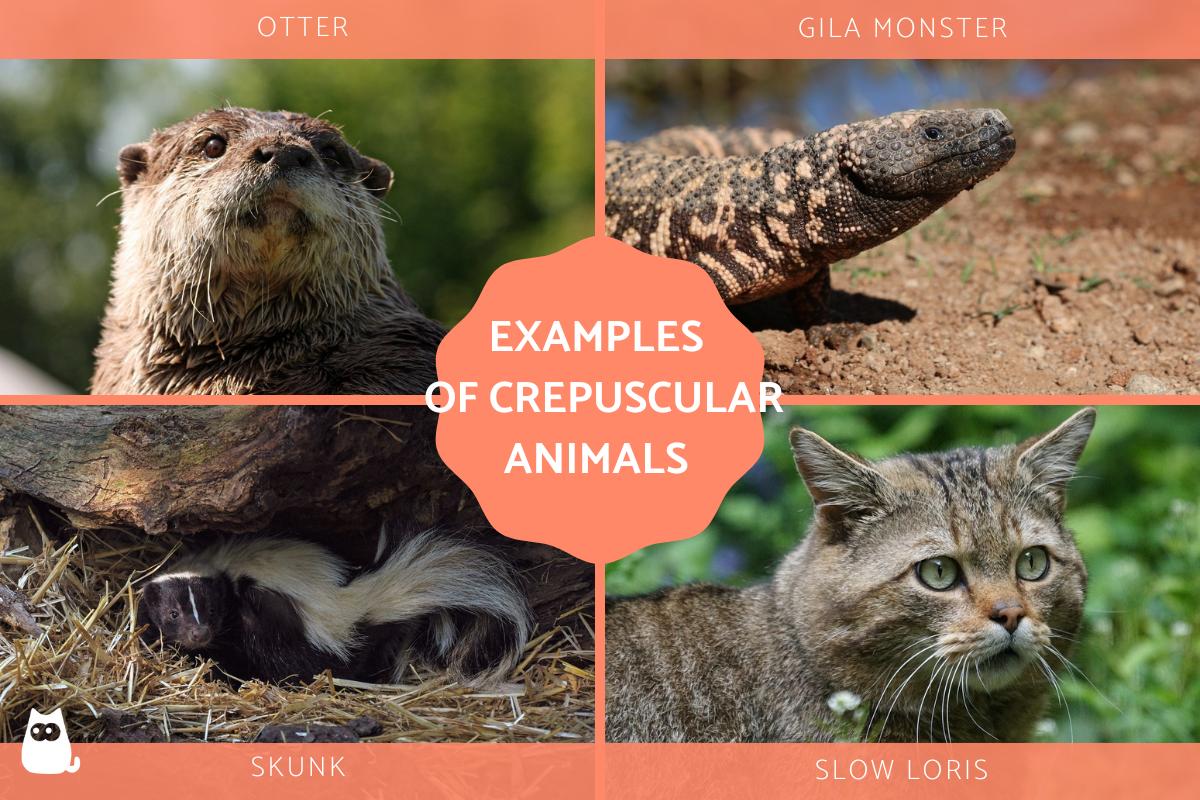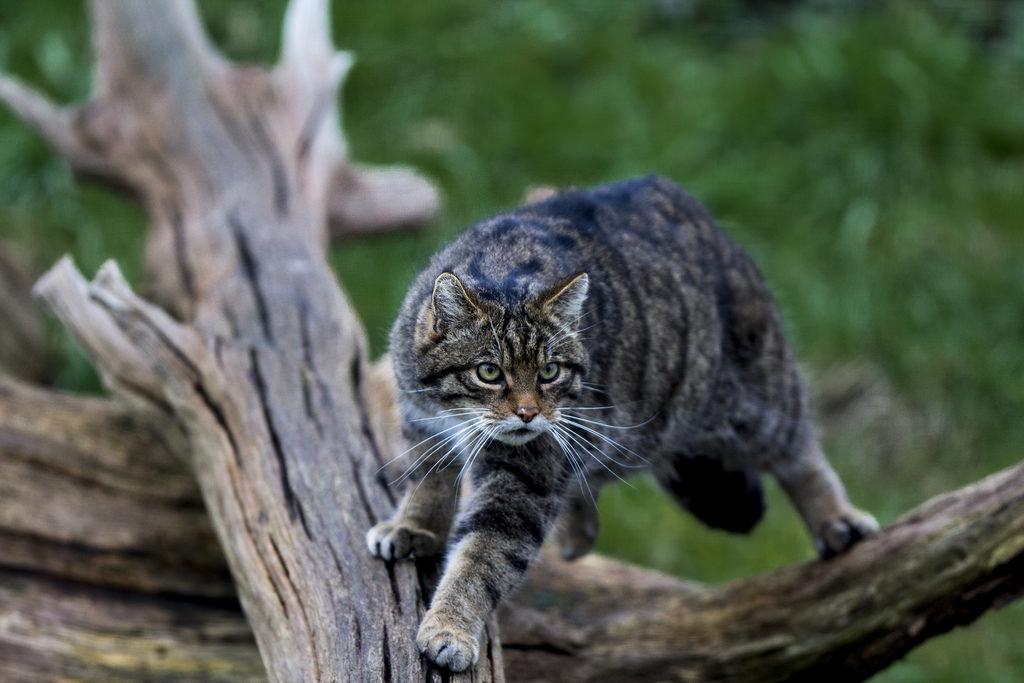Crepuscular Animals - Examples of Animals Active at Twilight


Crepuscular animals are those that are most active during the twilight periods of dusk and dawn. This is a period of low light where the sun has not set, but is below the horizon. Animals will adapt to their environment in many ways. Crepuscular animals have their own adaptations which make them better able to survive and thrive in these twilight periods. This applies to both predators and prey animals. Many animals that inhabit the same environment will never interact with each other directly due to their periods of activity. For this reason, crepuscular animals tend to only interact with other crepuscular animals.
At AnimalWised, we learn more about crepuscular animals by providing examples of animals active at twilight. We explain a little about why certain animals are crepuscular and how they adapt to lowlight environments.
What are crepuscular animals?
Crepuscular animals are those that become active during the twilight periods of the day. Twilight is when the sun is low enough past the horizon that it cannot be seen, but not so low that no light is emitted. This occurs at two points during each day, dawn and dusk. At dawn, the sun is rising until it becomes full daylight. At dusk, the sun is setting until it becomes night.
Different animals will be active at different points during the day. This has lead us to categorize animals by their periods of activity. These are the following:
- Diurnal: are mainly active during the daytime.
- Nocturnal: are mainly active during the night.
- Crepuscular: are mainly active at twilight.
- Cathemeral: can be active at irregular points during day or night.
Crepuscular animals have adapted their biological cycles to be active during the twilight hours. The domestic cat is often thought of as being nocturnal, but this is not true. They are actually considered crepuscular animals, although domestication affects their natural rhythms and some research suggests they should be considered cathemeral[1].
One of the most significant adaptations a cat has for the twilight hours is their eyes. Cats have a membrane on the back of their eye known as the tapetum lucidum. This allows for what little light there is in the environment to be reflected back to their retina, giving them better vision in low light. It is because of this membrane that it often appears as if cat eyes glow in the dark.
Types of crepuscular behavior
Although we have already provided the broad types of animals according to periods of activity, not all crepuscular animals are the same. There is some variation in the behavior of crepuscular animals, leading to the following subcategorizations:
- Matutinal: this is a reference to animals which are most active during the twilight of the predawn period, i.e. in the morning.
- Vespertine: these animals are those which become most active at dusk, i.e. before night sets in.
Now we know what crepuscular animals are, we can discover more about how they behave and why they do so.
Why are some animals crepuscular?
The main reason some animals are crepuscular is to do with hunting, both for prey and predator. It is believed that most animals began as being diurnal, meaning they were active at the same time during the day and competition was fierce. Certain animals began to change their habits and adapted accordingly, becoming a type of nocturnal animal, crepuscular or a mixture of both.
For predators, being crepuscular meant they can better stalk certain animals. There is enough light for them to see their prey, but it is dark enough that they can better hide in the shadows. This gives them an advantage when it comes to a surprise attack.
For prey animals, the opposite is true. By foraging for food during the twilight hours, they have enough light to see what they are doing, but it is also dark enough that they can do so with relative protection. Diurnal and nocturnal predators are adapted to hunt during the day or night, respectively. The twilight hours can make it very difficult for them to see prey.
Another important factor for crepuscular animals is the type of environment in which they live. In desert climates they protect themselves from the high temperatures of the day and the low temperatures of the night. By emerging in the twilight hours, different types of desert animals can better protect themselves from the health risks of extreme weather. Many desert animals are vespertine crepuscular animals since the morning can still be very cold.
Many crepuscular animals use the twilight hours for other purposes than feeding. Mating is one of the most important since it ensures the survival of their species. By mating during the twilight hours, animals can be offered more security and protection to complete the process.
Circadian rhythms
To better understand the biological cycles of crepuscular animals, we will talk about circadian rhythms. Chronobiology is the discipline that studies biological rhythms, describing both their temporal characteristics and their implications for life. A biological rhythm is an oscillation of a biological parameter that depends on the endogenous clock (physiology and genetics) and on environmental synchronizers (variations in the environment).
With this in mind, we can say there are different types of biological rhythms:
- Circadian rhythm: biological activity that occurs within a period of approximately 24 hours. As this cycle is regulated, diurnal, nocturnal and crepuscular animals will appear.
- Ultradian rhythm: biological activity that occurs in cycles of less than 20 hours (for example, feeding).
- Infradian rhythm: biological activity whose frequency is greater than 24 hours, i.e. it takes more than one day for their cycle to be complete. An example of this is the lunar cycle.
We can say that crepuscular animals have a circadian rhythm. Their activity is often very similar each day, although this will depend on their needs. For example, some animals will not need to feed every day, even if they might move around. Below, we will look at some examples of crepuscular animals in more detail.
Gila monster (Heloderma suspectum)
This reptile is the largest venomous lizard in the United States. It only comes out of its lair when the sun goes down, sometimes it can go days and weeks without going out and it will only do so if it rains.
The diet of the gila monster is varied and can consist of small mammals, lizards, snakes, insects and even the eggs of animals. They tend to eat a large amount in one sitting, then store the energy this food provides to be used over a long time. In part, this is thanks to a large amount of fat which they store in their tails. It is even thought a gila monster can survive the entire year with only a handful of large feedings during the spring.
Gila monsters are adapted to crepuscular periods thanks to their acute sense of smell. Even if they cannot see very well in low-light environments, they can smell their prey and locate them precisely. This makes them incredible hunters.
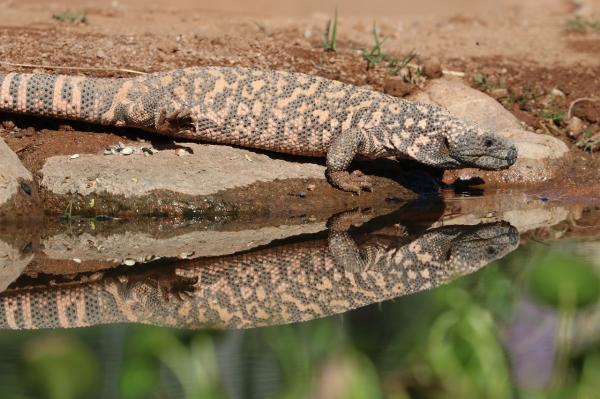
Striped skunk (Mephitis mephitis)
The striped skunk is another crepuscular species. During the day it spends its time in its burrow, but at dusk and dawn it goes out in search of food. It is a very calm animal that tends to ignore other animals, but if it feels threatened it will spray a pestilential liquid on its attacker.
This ability to spray a toxic substance is another adaptation which helps them to avoid predation. The skunk itself mainly preys on insects, but they will also eat small mammals, lizards and anything they can catch easily.
Being a crepuscular animal is important for humans. Skunks are increasingly coming in contact with people, often due to development on their natural habitat. If we are moving around in an area where skunks are common during the twilight hours, we will need to be extra careful in case we surprise them and get sprayed.
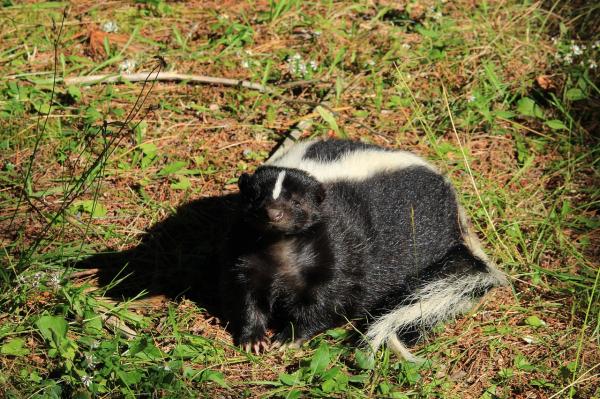
European otter (Lutra lutra)
One of the cutest crepuscular animals, we need to ensure we don't forget how good a hunter is the European otter. These animals mainly hunt fish, but they can also attack terrestrial animals since they are semi-aquatic. They have adept sight adapted to the twilight periods, but they also have an incredible sense of smell. It is event thought possible that they may be able to smell well underwater, something that is uncommon in mammals.
Thanks to social media and other factors, there is an increased desire to keep otters as pets. There are many reasons why this is a bad idea, both for the safety of the otter and due to the disturbance they create in a domestic environment. Another important factor is the fact they are crepuscular and will spend much of the day sleeping. This means potential guardians will disturb them and upset their circadian rhythms.

European rabbit (Oryctolagus cuniculus)
Although they can be seen during the day, when the temperature is hot, they are crepuscular animals. This allows them to avoid some aerial predators, such as the eagle and other birds of prey. These are very social animals and will spend much of their time in warrens. When they do come out, they are very nervous and will run at the slightest disturbance. This is another method of self-preservation since they are prey to many predators.
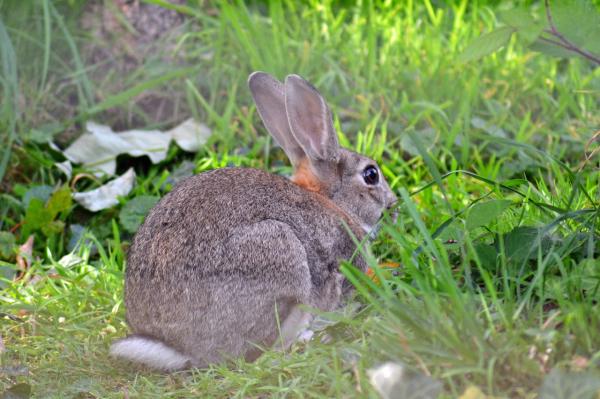
European wildcat (Felis silvestris)
The domestic cat (Felis catus) is a descendent of the wildcat (Felis silvestris), both of which have crepuscular habits. The wildcat feeds mainly on small mammals like stoats and weasels, but will eat anything they are large enough to kill. They live in forest areas, so hunting at twilight gives them the ability to hide in foliage and use their very keen eyesight to hunt.
Domestic cats are crepuscular animals also, but the long period of domestication means they have adapted better to human diurnal habits. However, they are still generally more active at dawn and dusk. It is for this reason many guardians are woken by their cats for feeding since they are naturally inclined to eat earlier in the day.
Learn about different types of wildcat from around the world with our related article.
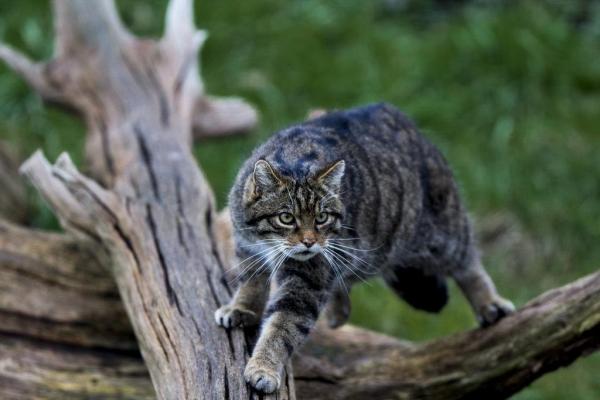
If you want to read similar articles to Crepuscular Animals - Examples of Animals Active at Twilight, we recommend you visit our Facts about the animal kingdom category.
1. Hererra, D. J., et al. (2022). Spatial and temporal overlap of domestic cats (Felis catus) and native urban wildlife. Front. Ecol. Evol., 10.
https://doi.org/10.3389/fevo.2022.1048585
- Arendt, J. (1998). Biological rhythms: the science of chronobiology. Journal of the Royal College of Physicians of London, 32(1), 27-35.
- Rickel, S., & Genin, A. (2005). Twilight transitions in coral reef fish: the input of light-induced changes in foraging behaviour. Animal Behaviour, 70(1), 133-144.
- Roenneberg, T., & Foster, RG (1997). Twilight times: light and the circadian system. Photochemistry and photobiology, 66(5), 549-561.


